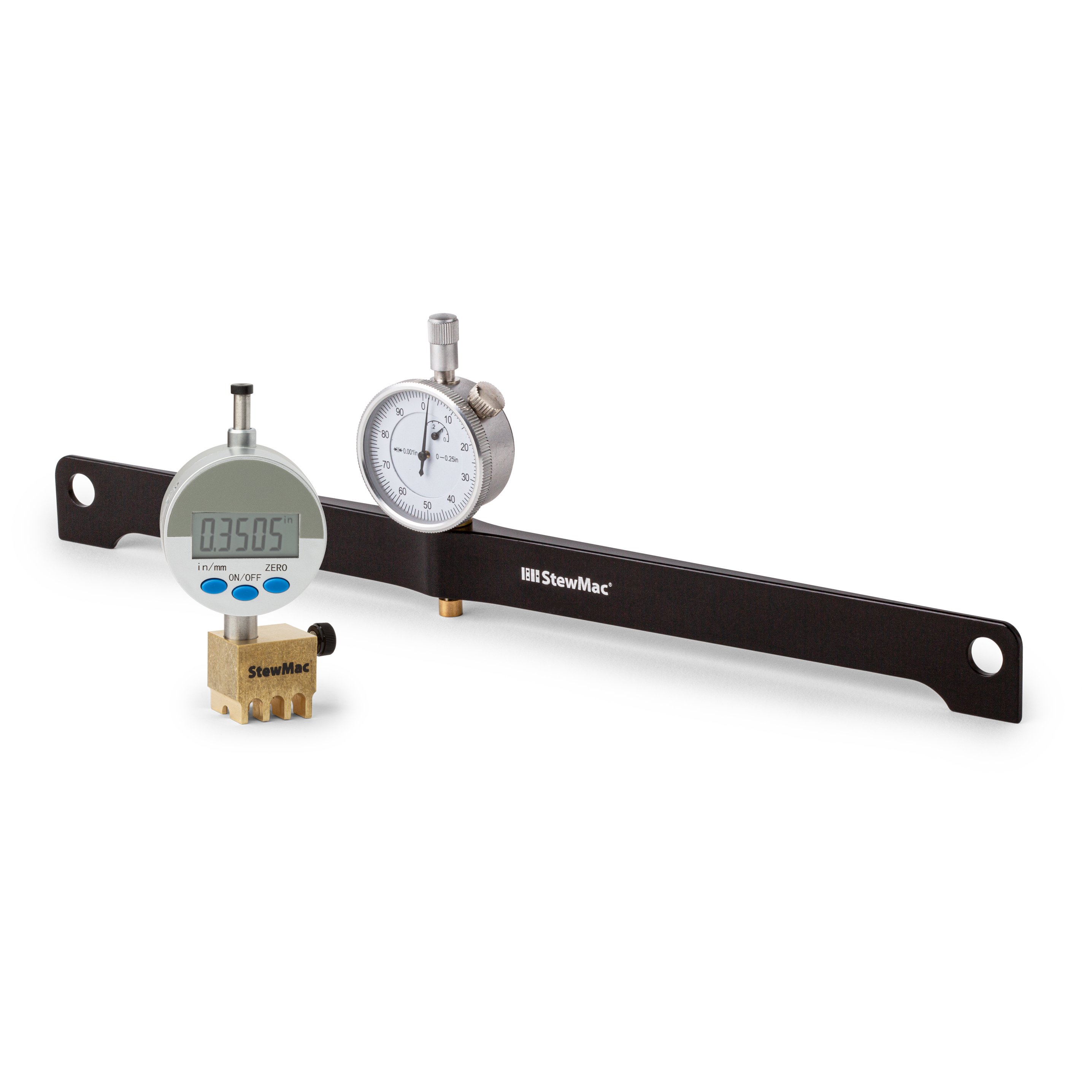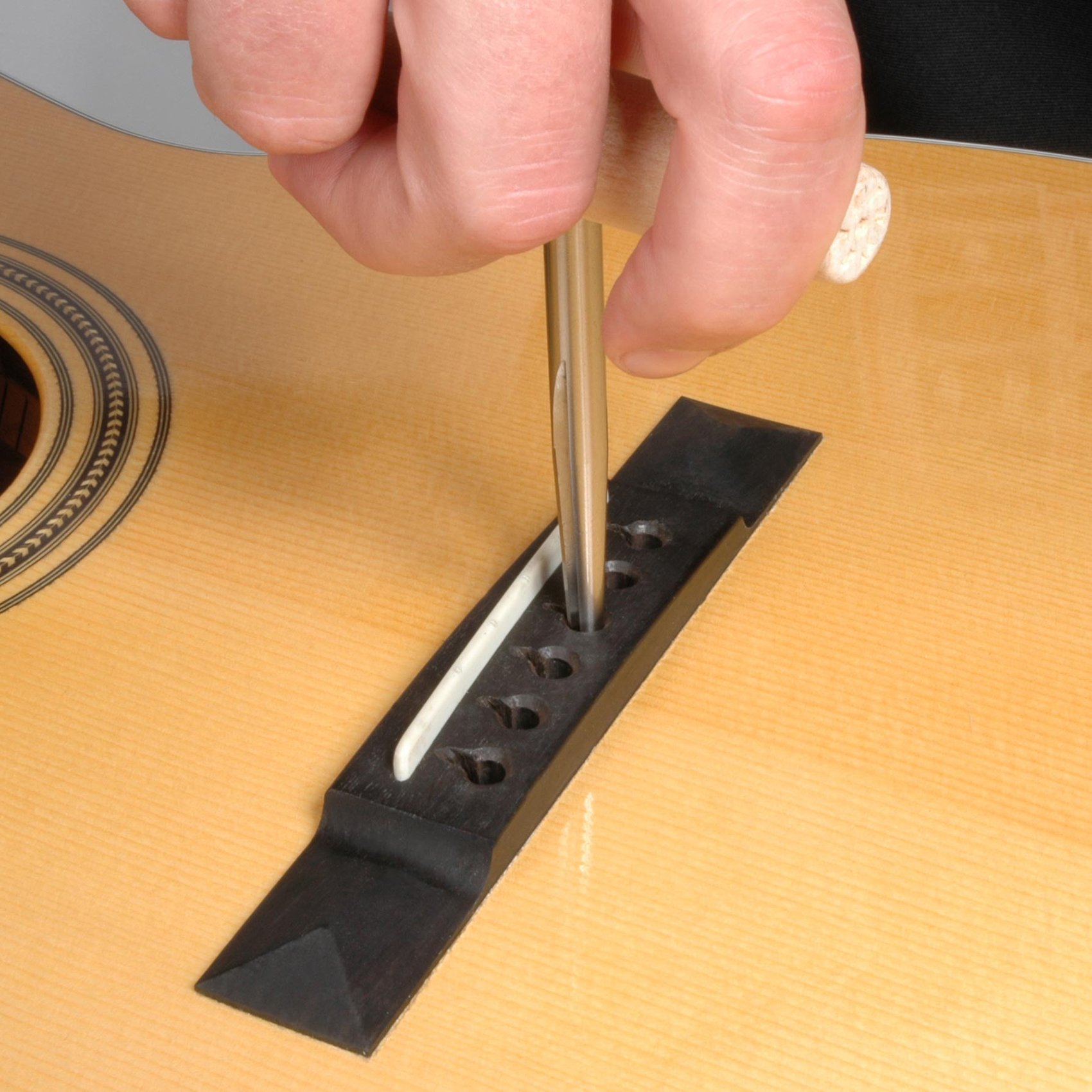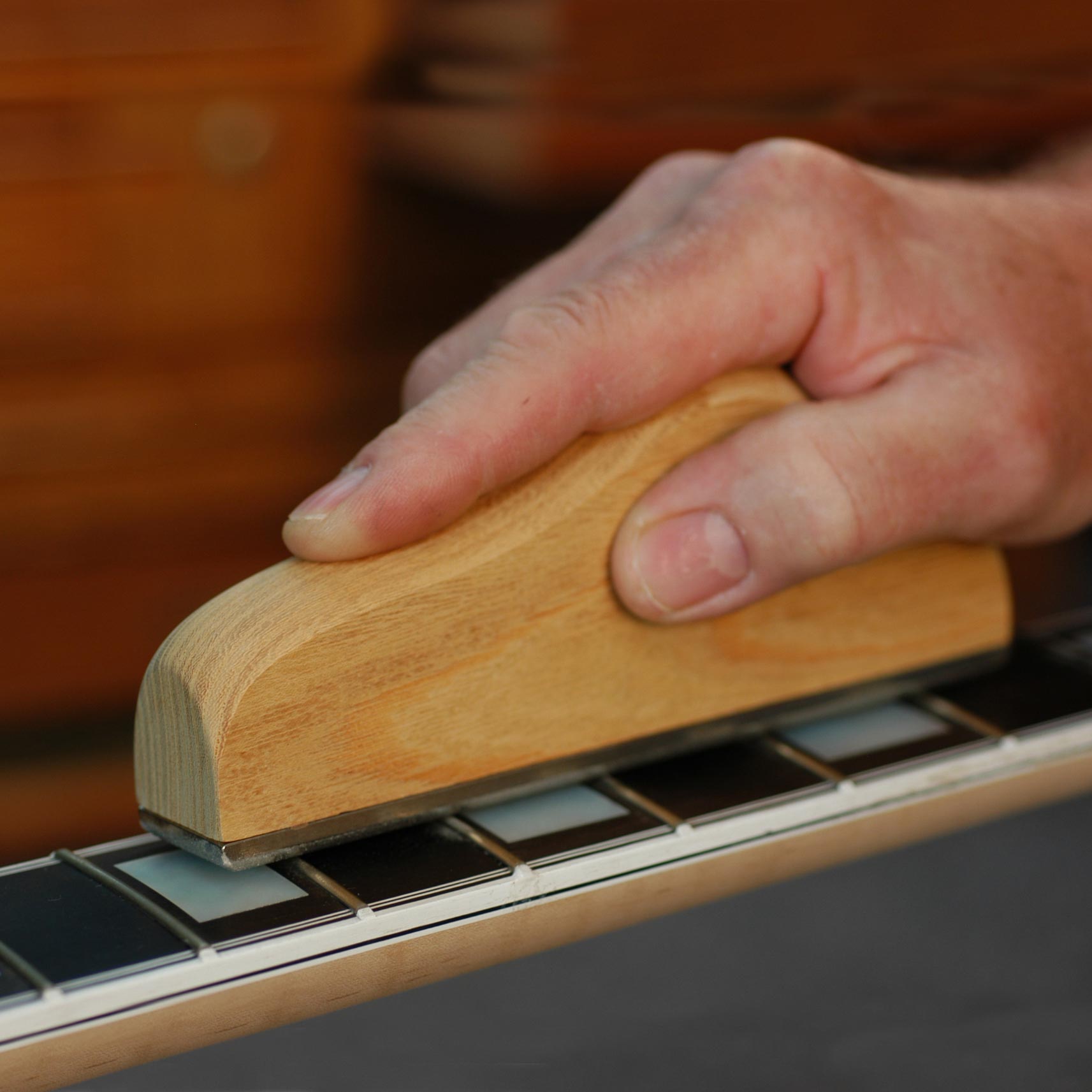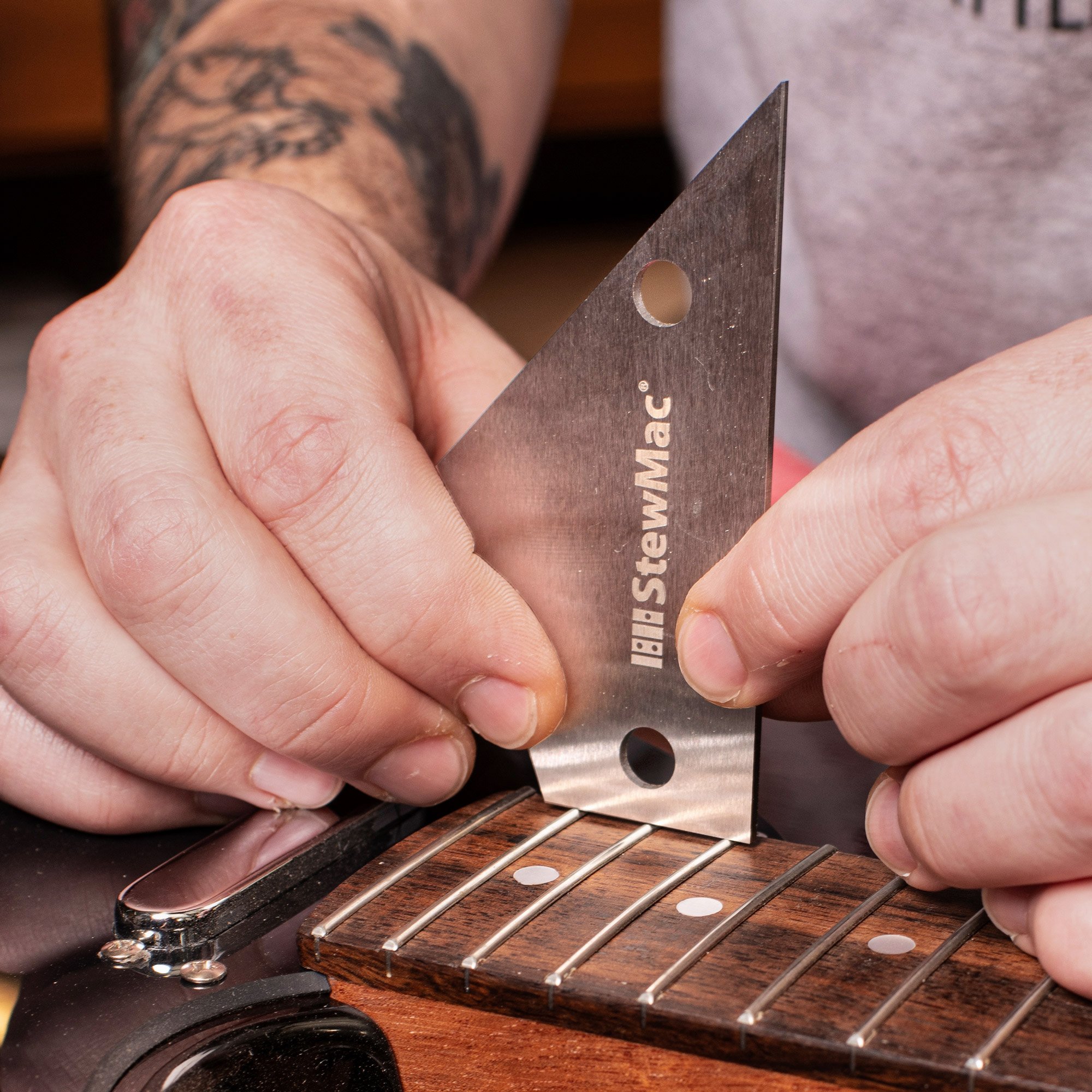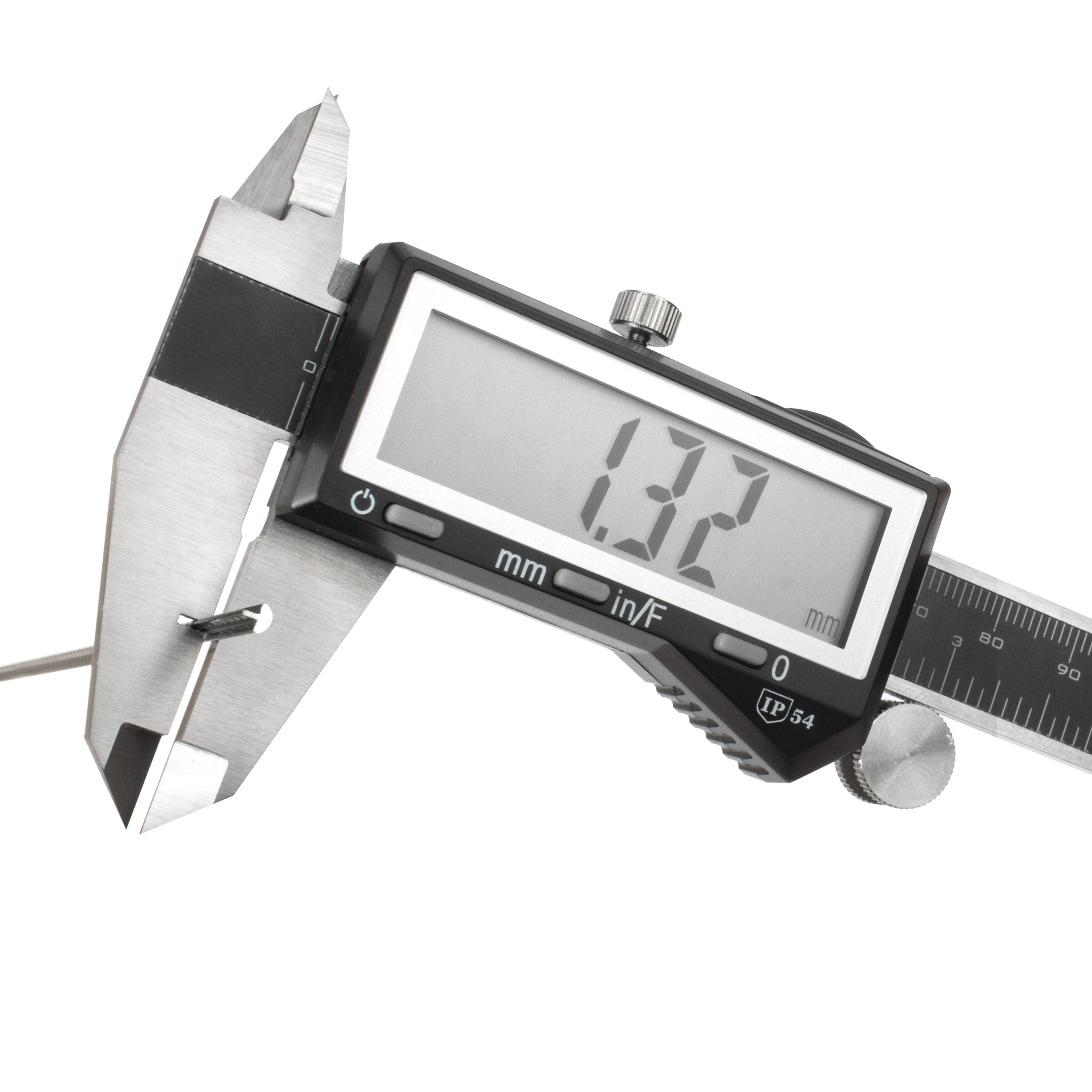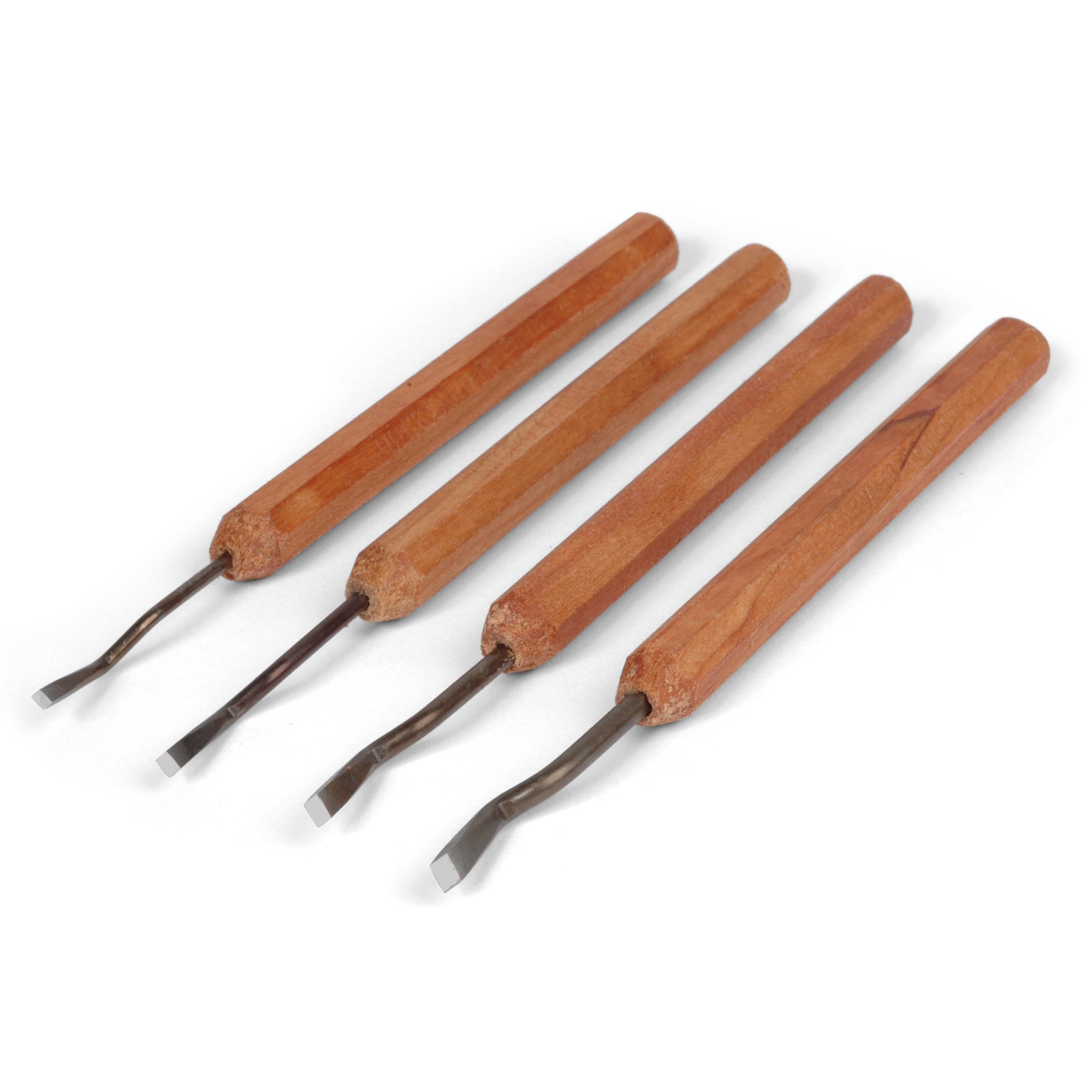Fixing an acoustic pickup fast—it has to be onstage in an hour!
Buddy Miller’s guitar has to be on stage with Emmylou Harris in 75 minutes! Emmylou Harris’ “Three Girls & Their Buddy” tour performed here in Athens, Ohio. It’s a great show: Emmylou with Shawn Colvin and Patty Griffin backed up by Buddy Miller’s versatile guitar work. Amplified acoustic guitars are a big part of this show. Among the forest of guitars on the stage, a standout was Buddy’s grand concert baritone built by Julius Borges. It sounded great, so you’d never guess that a few hours earlier it was here in my shop getting emergency surgery! Buddy had an undersaddle pickup installed a few days before, and now the two outside strings had almost no output compared to the middle four. This isn’t unusual; I’ll bet the installer had as little time to do the work as I had to fix it! I offered to help, and Buddy brought me the guitar at 1:45pm. His sound check was scheduled for 3:00. That’s just an hour and fifteen minutes! No time to chat... gotta get to work! I checked the saddle slot for flatness with a Fret Rocker: if it's not flat, the tool will rock from end to end. It turned out to be flat but I found a few tiny, almost imperceptible, ridges in the slot bottom. I removed them with a micro chisel. The middle of the saddle measured .123" on my digital caliper, but the ends measured .127". Maybe that means the ends are too snug in the slot, keeping the saddle from moving up and down properly — explaining the weak output. I marked the ends with a pencil, and stroked them over the coarse 6" fingerboard leveler to thin them. The pencil marks show where the file is working. Any remaining pencil marks indicate a spot that didn't get filed (could be a low spot). I put the saddle back in and strung the guitar to pitch. It was now 2:15 and Buddy was standing in the shop waiting — nerve-wracking if you let it get to you! At 2:30, the output was better, but not perfect. I took out the saddle and thinned the ends a little more. With a relief gauge, I’d measure the guitar top with and without string tension. The tension deflects the top by .010" (Figure 1). Armed with that info, I’d use a brace repair jack to lift the top by .010" and rout the saddle slot. (Figure 2) This simulates string tension, so the slot stays flat after the strings go back on! Notice how Julius Borges numbers each of his bridge pins from 1 through 6 so they always go back in the same holes. Julius used fossil ivory pins for this beauty; he only cuts flutes into the two lowest strings — the others nest in carefully shaped, notched holes in the bridge. Each pin is fitted by hand using a 5-degree tapered reamer. At 2:45 the guitar was back to pitch. Buddy loves his Waverly tuners (he tunes this baritone to B, E, A, D, G, B from low to high). The strings sounded lots better, and he'll play it in the show tonight for the first time. If there were a little more time, I think we could pull even more sound out of that transducer by experimenting with other string gauges. But it’s 3:00 and time for Buddy’s sound check. The show must go on!Pickup Repair-Gotta make this quick!
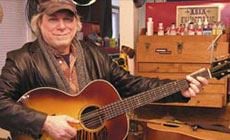
The Problem
First, check the slot
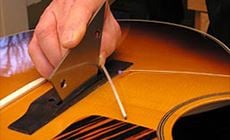
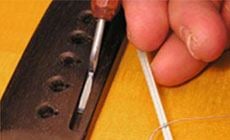
Next, check the saddle
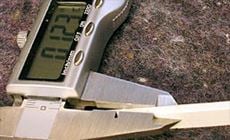
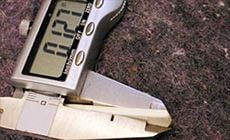
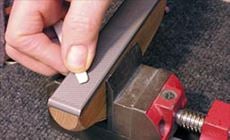
If I had more time:
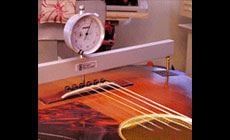
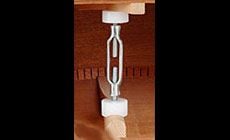
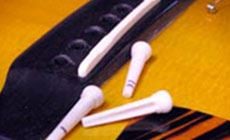
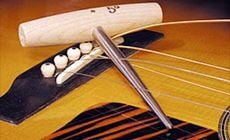
Buddy’s happy!

